ASCII, short for American Standard Code for Information Interchange, is a character encoding standard that assigns unique numeric values to a set of 128 different characters, including letters, numbers, punctuation marks, and control characters. It is the most commonly used character encoding scheme for computers and electronic devices.
 Printable characters
Printable characters
The ASCII set contains a range of printable characters that can be displayed and printed. These characters include uppercase and lowercase letters, numbers, punctuation marks, and some special symbols. Each printable character is assigned a specific binary value, which is used to represent the character in computer systems.
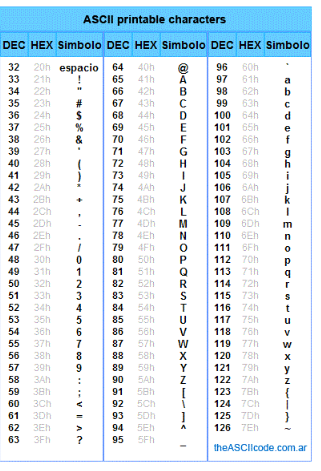 Character Representation
Character Representation
In GCSE Computer Science Theory, understanding character representation is essential. The ASCII chart provides a visual representation of the characters and their corresponding decimal, binary, and hexadecimal values. This chart serves as a valuable reference guide for programmers and computer science students to understand the encoding of characters in the ASCII set.
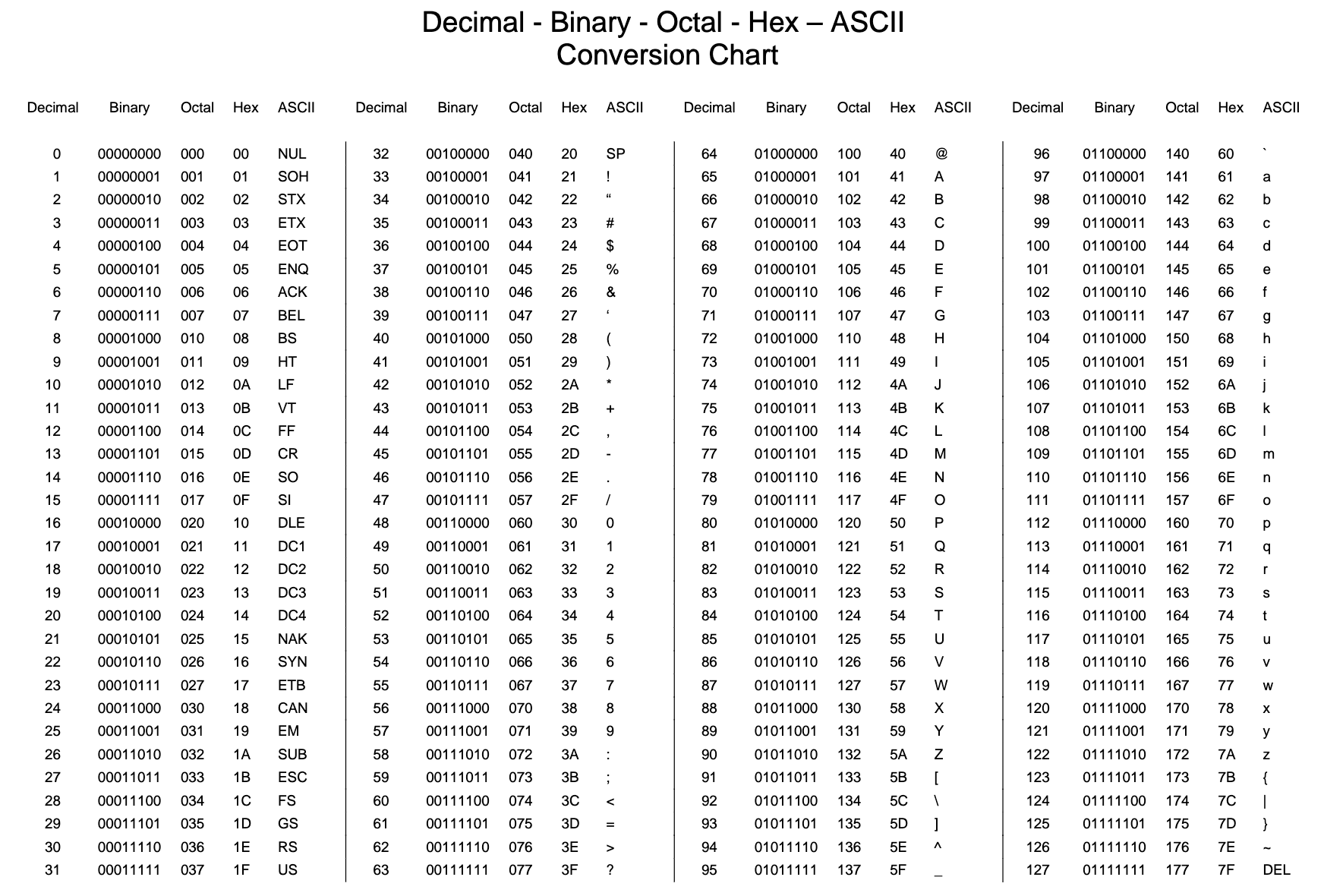 Character Encoding
Character Encoding
The ASCII chart also helps in understanding character encoding. Character encoding is the process of representing characters as numeric codes. ASCII encoding uses a 7-bit code, allowing for a total of 128 different characters. These characters can be represented and manipulated by computers and other electronic devices, making ASCII a fundamental concept in computer science.
 Non-Printable Characters
Non-Printable Characters
In addition to printable characters, the ASCII set also includes non-printable characters. These characters have specific functions in computer systems, such as control characters used for device control and formatting. Non-printable characters cannot be displayed visibly but can be interpreted by computer programs and operating systems. Understanding non-printable characters is crucial in various areas of computer science, including input/output handling and data manipulation.
 Common ASCII Characters
Common ASCII Characters
Among the 128 ASCII characters, some are more commonly used than others. This table illustrates the 95 most commonly used ASCII characters, including uppercase and lowercase letters, numbers, and various symbols. Familiarizing oneself with these common characters is essential for effective programming and data processing.
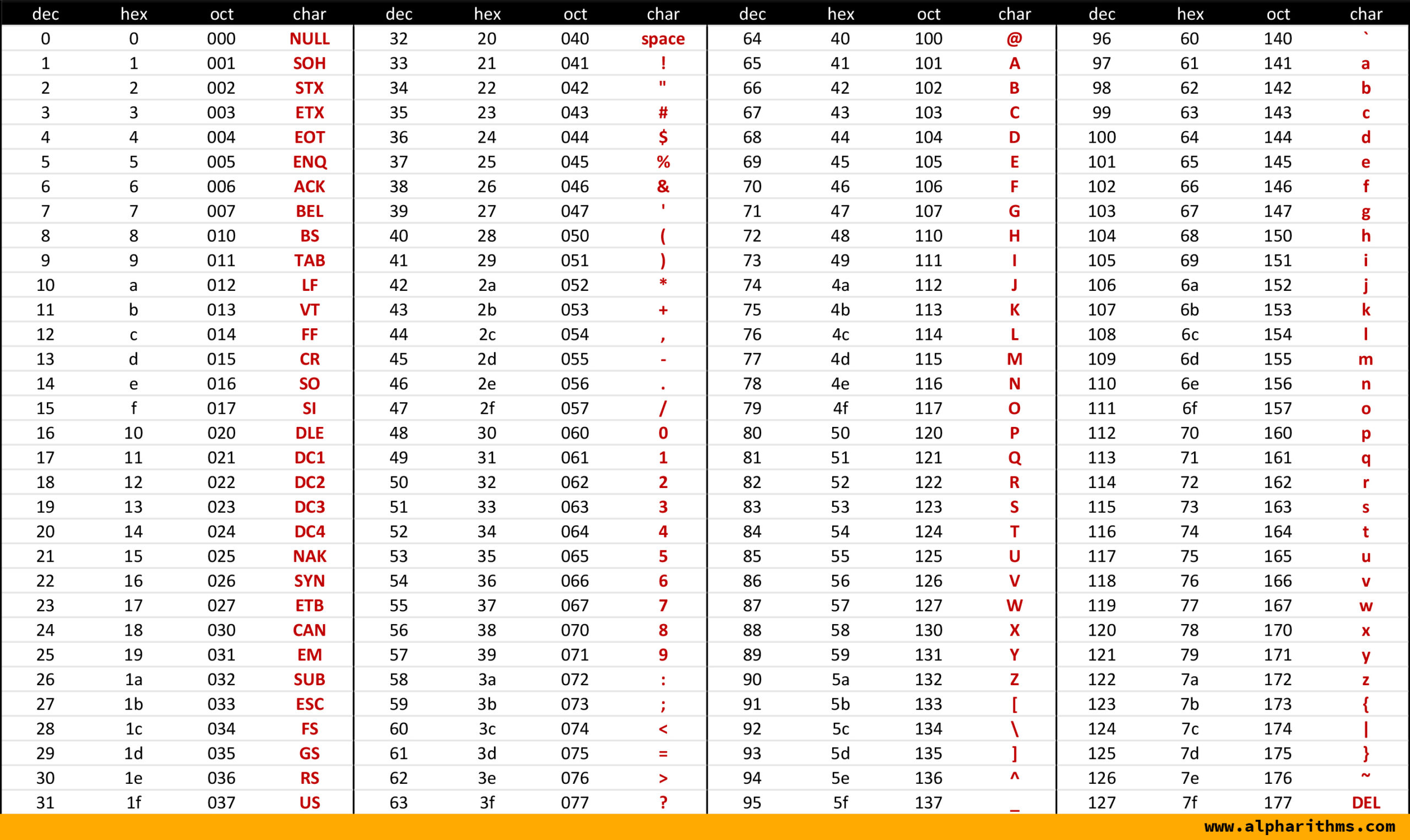 Printable Reference & Guide
Printable Reference & Guide
An ASCII table serves as a valuable printable reference and guide for programmers and computer science enthusiasts. It provides a comprehensive list of all 128 ASCII characters, their binary and hexadecimal values, and their corresponding printable representations. This table is an indispensable tool for anyone working with character encoding and manipulation.
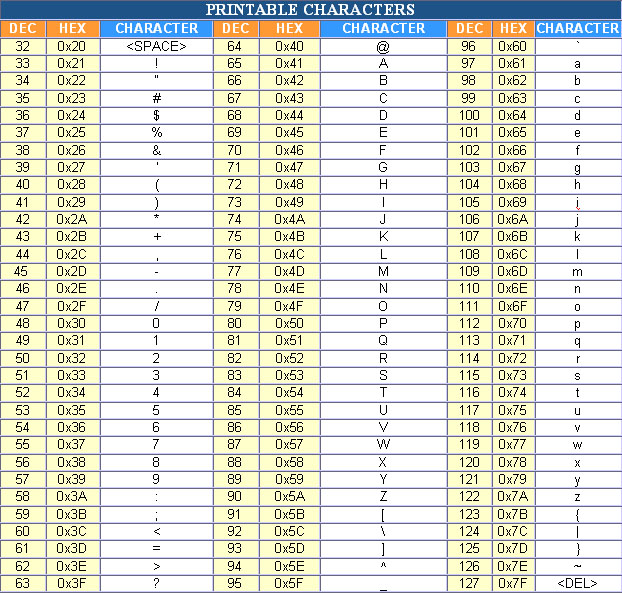 Coding Tips
Coding Tips
An ASCII table can be a useful resource for coding. When working on software programs or web development, understanding the ASCII representation of characters is vital for accurate input and output handling. By referring to an ASCII table, developers can ensure that their programs handle characters correctly and produce the intended results.
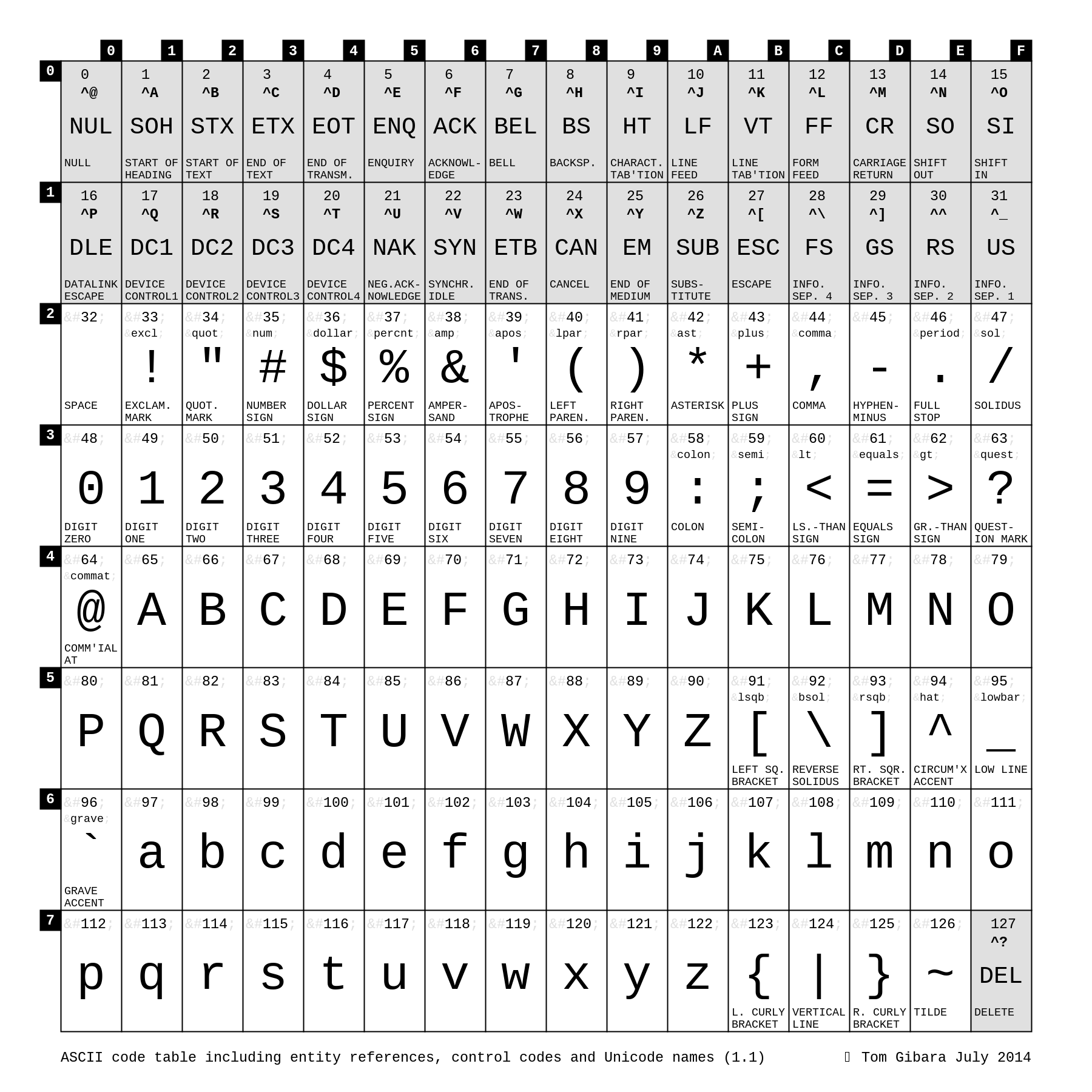 ASCII Table Generator
ASCII Table Generator
A table of ASCII codes and corresponding characters can be generated using the ASCII table generator. This tool is designed to create a table that lists all 128 ASCII characters, their decimal, binary, and hexadecimal values. The generated table can then be used as a quick reference for programmers and computer science students.
:max_bytes(150000):strip_icc()/ASCII-5bf37a8ec9e77c005108fa71.jpg) Sassy ASCII Characters
Sassy ASCII Characters
While ASCII is primarily used for computer-related purposes, some people have found creative ways to use ASCII characters for artistic expression. Sassy ASCII characters include emoticons, decorative symbols, and text-based art. These characters can be a fun way to add personality and creativity to digital content, social media posts, and online communication.
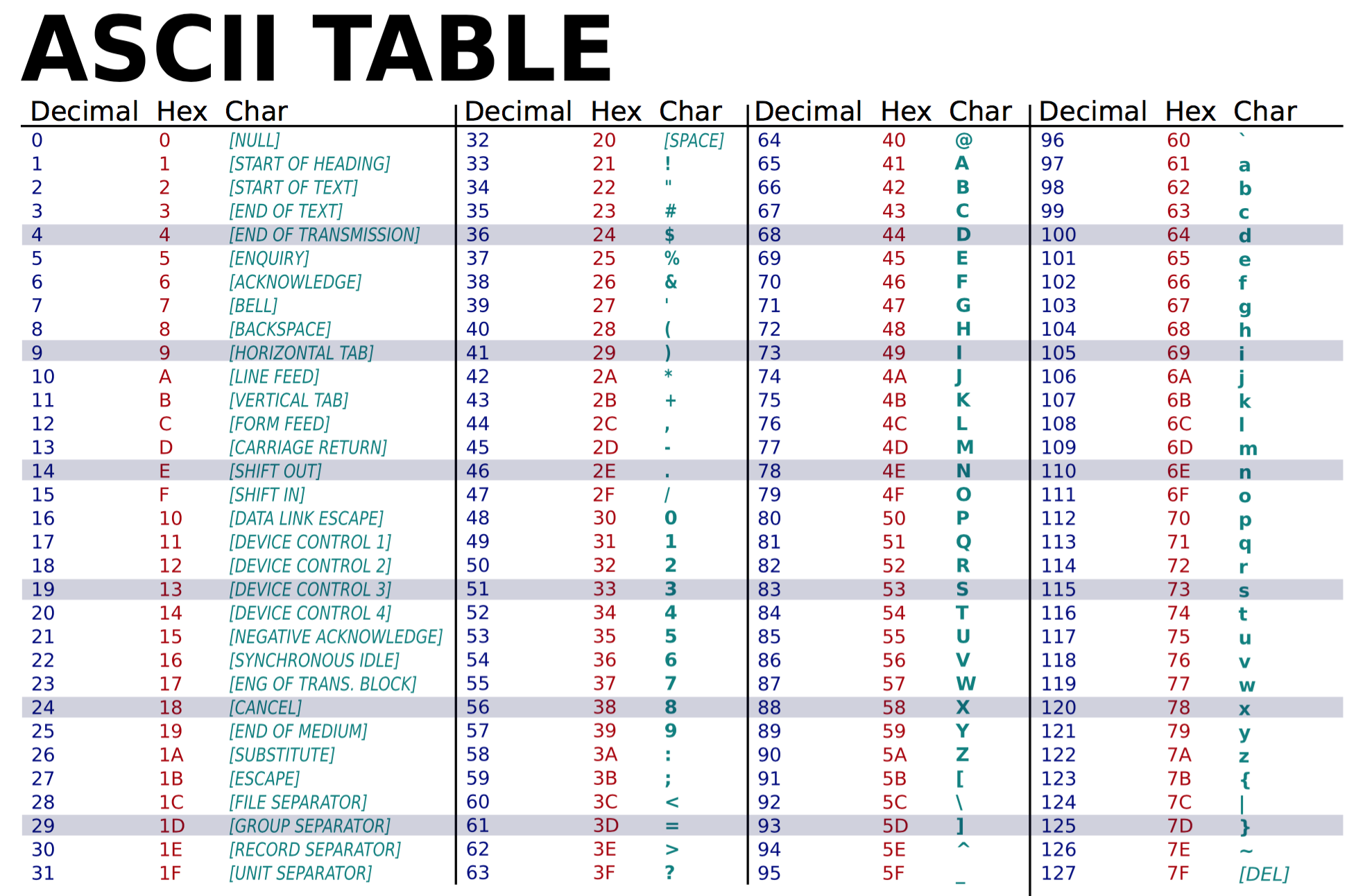 Non-English characters
Non-English characters
Although the ASCII set primarily represents English characters, there are other character encoding schemes that include non-English characters. For example, Unicode is a widely used character encoding standard that encompasses a vast range of characters from different languages and scripts. Non-English characters play a crucial role in multilingual communication and internationalization of software applications.
ASCII, with its set of printable and non-printable characters, has remained a cornerstone of character encoding for decades. Understanding the ASCII set and its representation of characters is vital for anyone working in the field of computer science and programming. Whether you are designing software applications, developing websites, or simply interested in the foundations of computing, familiarizing yourself with ASCII is an essential step towards becoming a proficient professional in the field.